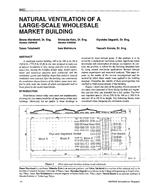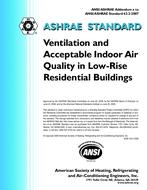The main objective of this project is to investigate the impacts on an absorption chiller with active enhancement mechanisms. From the literature review, various mechanisms, such as vibration, rotation and air-bubble, were investigated to improve the absorption process. After completing the literature review and communication with PMS (project monitoring sub-committee), the desired mechanism, experimental conditions and the absorption chiller were selected.
In this final report, the experimental conditions and the corresponding results of the project 1462-RP "Active Mechanisms for Enhancing Heat and Mass Transfer in Sorption Fluids" were presented and discussed. After a long time short-term preliminary experiments, we selected vertical sine vibration from 15 Hz to 30 Hz with amplitude from 0.1mm to 0.4mm as the primary conditions (as we encounter resonance and other technical challenges at higher frequencies or amplitudes).
A commercial absorption chiller with a capacity of 12kW (40,946 Btu/hr) is utilized in this project. We installed and constructed peripheral systems, including a vibration system and a water loop system, additional to the chiller in order to maintain a repetitive experimental condition when the outdoor conditions change. We also installed a data acquisition system for in-line (real-time) measurement on the solution concentration and temperature and flow rate of the solution and water loops. We can use these measurements to calculate the heat and mass transfer capacity in the absorber in steady-state. The enhancement is obtained when the differences, before a vibration and during a vibration, are compared. The experiments were conducted in different groups to identify effects from additives, different solution flow rates as well as different amplitudes and frequencies.
With the commercial absorption chiller and the proposed mechanism, we found that, under specific combination of frequencies and amplitudes, the heat and mass transfer of the absorber can be greatly improved (with nearly 40% enhancement at the optimal conditions). The effect is a combined effect of the solution flow rate (i.e. falling film thickness), the vibration amplitude, and the vibration frequency. The results of this project revealed the optimal frequency and amplitude combinations (at 25 Hz & 0.2-0.3mm) for the absorption chiller tested in this study. The results of this project provided information to start filling the knowledge gap about the influence of mechanical motion in absorption chiller technology.
Citation: ASHRAE Research
Product Details
- Published:
- 2015
- Number of Pages:
- 49
- Units of Measure:
- Dual
- File Size:
- 1 file , 2.2 MB
- Product Code(s):
- D-RP-1462


